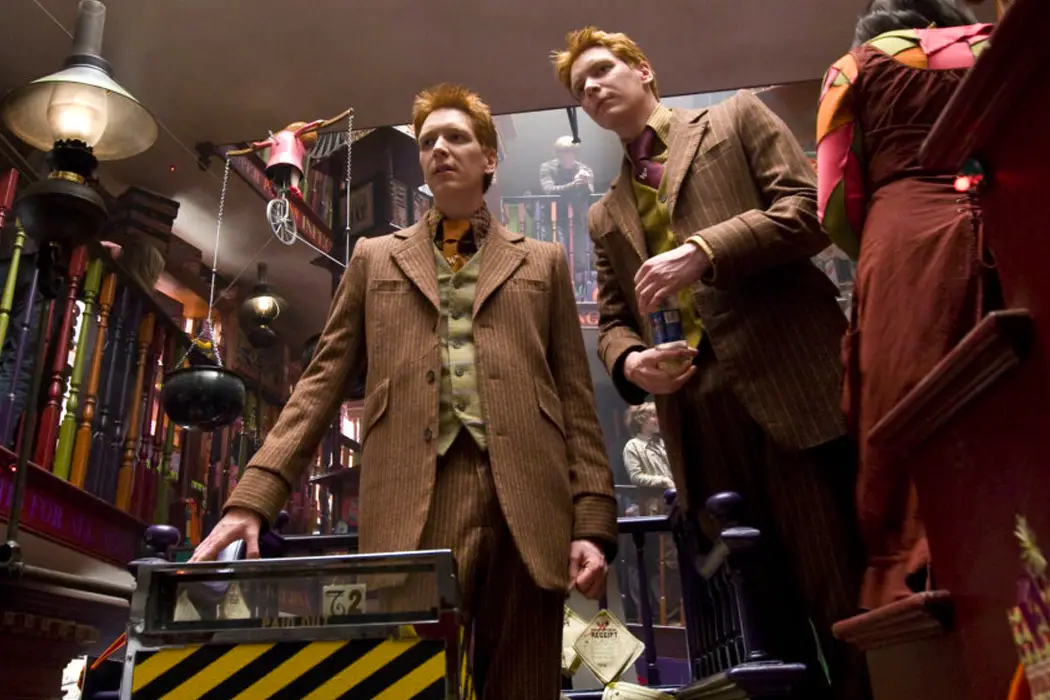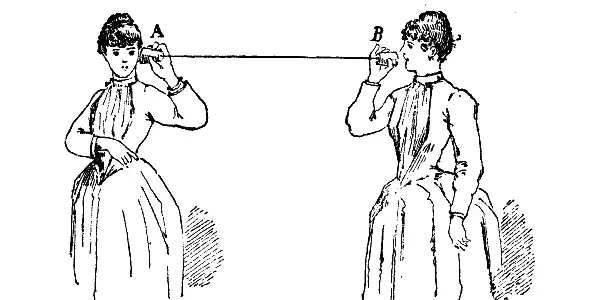Fantasy Science Pt. 16: Extendable Ears In HARRY POTTER

Radha has a PhD in theoretical quantum physics. Apart from…
Signal processing. Telecommunications. Digital vs. analog. Have you heard terms like these flying around the science fiction sections of the film/tv world? Have you ever wondered just how accurately these films portray real science? Well, my friends, today is your lucky day: this column, Fantasy Science & Coffee, aims to bridge the gap between science and science fiction in films and popular culture. My hope is to explain things in a fun way – like we’re chatting over coffee.
You may be thinking: who is this person, why does she think she can explain science, and why the heck would I want to have coffee with her? Well, I’m Radha, a researcher in India, currently pursuing a PhD in theoretical quantum physics. I quite like hot beverages. I’ll also pay.

In this sixteenth part of the series published on the second and fourth Tuesdays of every month, we are going to look at how the extendable ears from Harry Potter might work in the muggle world. Let’s begin.
Fred and George Weasley’s Extendable Ears
The Extendable Ears are a clever eavesdropping gizmo invented by the Weasley twins. In the books, they are described as long flesh-colored strings: you stick one end in your ear, and another underneath the door behind which a particularly succulent conversation is taking place. In the films, they’re represented by a pair of human ear replicas connected by a string.

The ears were first used at 12 Grimmauld Place by Harry Potter’s group of friends to eavesdrop on the adults, who were part of a secret society called the Order of the Phoenix. They were able to gain vital pieces of information, up until Hermione’s cat, Crookshanks, took off with the ear that was directed towards the meeting room.
While we know that the ears are magical, and let’s take a look at how a muggle version might work!
Audio Signal Processing and the Telephone
I imagine the extendable ears run on the same principle as the telephone. This loosely runs on the principle behind the ‘telephone’ made with two cups and a string you may have tried as a child.

Essentially, the sound waves produced by someone speaking induce vibrations in the cup that travel down the taut string to the receiver’s end. Vibrations are then induced in the second cup, and the sound waves they produce can be heard by the listening person. Telephones work in a similar manner: the sound waves are converted into a signal, which is then transmitted over the network to the receiving end, and then converted back into sound waves.
Let’s pretend that you give me a call. After all I did promise you coffee, right?
When we discuss the coffee, the signals leaving our mouths are analog — that means they vary continuously and smoothly. In order for our voices to be transmitted over the network, they need to be converted to digital signals which can be visualized as discrete steps as opposed to a continuous wave, and represented by zeroes and ones.

When you tell me exactly how you take your coffee, this conversion happens on your end through an analog-to-digital converter (ADC).
After your voice has been converted to a digital signal, it is broken into a number of packets that are sent over the network alongside many, many other network packets belonging to other people who are having conversations at that time. Kind of cool to think that all of our voices are mixed up on the network when we talk, isn’t it?
On my end, a digital-to-analog converter (DAC) converts the signal back to a format I can understand. Telephones obviously have a number of more components than just these converters, but this is the crux of the communication that takes place between us, that allows me to hear your coffee preferences.
This process may sound fairly simple and straightforward, but it actually isn’t. Digital signal processing (DSP) is a complex, constantly evolving field of study that covers digitizing all types of real-world signals such as video, temperature, position, and pressure, etc., for applications in telecommunications, radar, image processing, and even seismology. Audio signal processing is but one sub-field, covering things like speech recognition and music. I encourage you to look up more if this interests you! Who knows, you might just come up with a way to create Extendable Ears, thereby giving groups of adolescents the means to save the world – or at least creatively cheat on their school tests.
What do you think a muggle version of the Weasley’s Extendable Ears would look like?
More to Explore
Resources (light)
All About Circuits: An Introduction to Digital Signal Processing
Sparkfun: Analog vs. Digital
HowStuffWorks: Can two cans and a string really be used to talk over a distance?
HowStuffWorks: How Analog and Digital Recording Works
Alohomora Podcast: Question of the Week, Episode 81 (2014)
Resources (in-depth)
Cisco: Defining Analog Voice
Coursera Course: Digital Signal Processing
Analog.com: A Beginner’s Guide to Digital Signal Processing (DSP)
The Scientist and Engineer’s Guide to Digital Signal Processing
Does content like this matter to you?
Become a Member and support film journalism. Unlock access to all of Film Inquiry`s great articles. Join a community of like-minded readers who are passionate about cinema - get access to our private members Network, give back to independent filmmakers, and more.
Radha has a PhD in theoretical quantum physics. Apart from research, she consults on sci-fi screenplays/books. In her free time, she cosplays and irritates her three cats. Bug her on Twitter: @RadhaPyari













